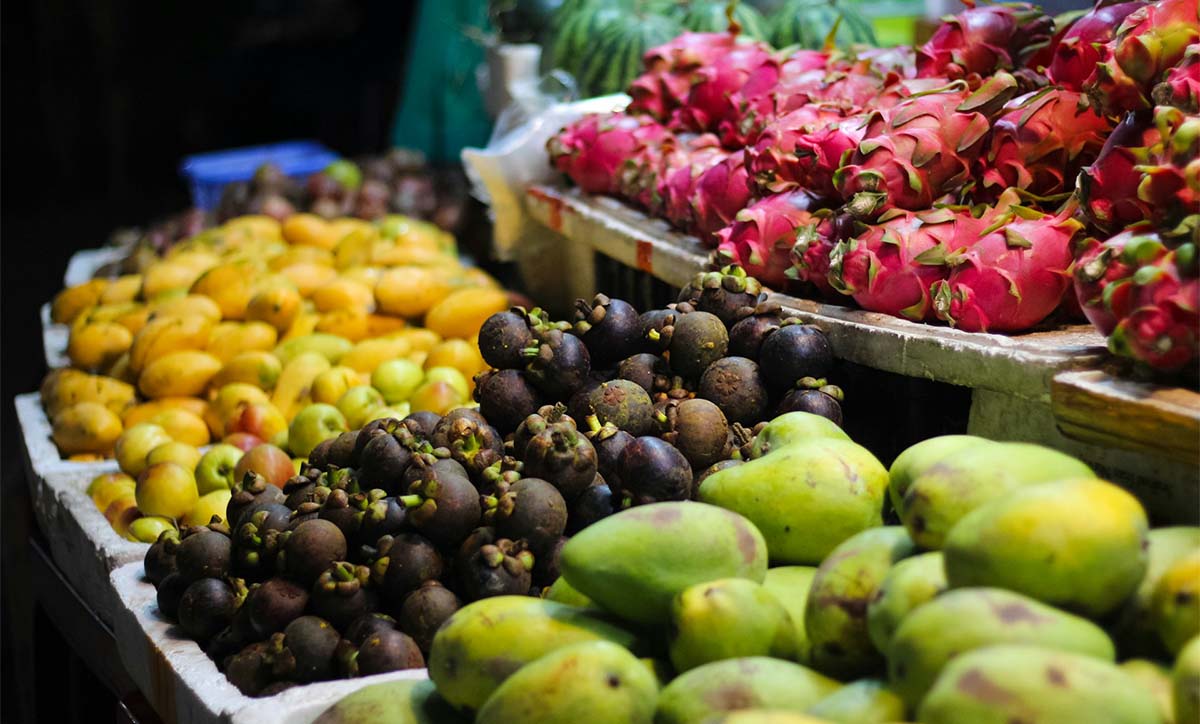Tropical fruits, with their vibrant flavors and exotic origins, are celebrated worldwide for their natural sweetness. From juicy mangoes to tangy pineapples, the variety of tropical fruits offers a spectrum of sweetness that appeals to diverse palates. Understanding the sweetness scale of tropical fruits not only enhances culinary appreciation but also aids in selecting fruits that best suit individual preferences and recipes.
The Sweet Spectrum
Tropical fruits range from intensely sweet to pleasantly tart, each providing a unique taste experience. At the high end of the sweetness scale, fruits like mangoes and jackfruits shine. Mangoes, particularly varieties like Alphonso and Ataulfo, are renowned for their rich, honey-like sweetness and silky texture. Jackfruit, the largest tree fruit in the world, offers a candy-like sweetness that makes it a favorite for desserts and snacks.
Moving toward the middle of the spectrum, we find fruits like papayas and bananas. Papayas, with their mild sweetness and creamy texture, are versatile and pair well with both sweet and savory dishes. Bananas, a global favorite, provide consistent sweetness with subtle floral undertones, making them perfect for smoothies, baked goods, or enjoying fresh.
On the tart end of the scale, fruits like pineapples, passion fruits, and guavas offer a balance of sweetness and acidity. Pineapples, depending on their ripeness, can range from sharply tangy to refreshingly sweet. Passion fruit’s aromatic pulp bursts with tropical flavor, blending sweet and tart in perfect harmony. Guavas, while less common in some regions, provide a unique, slightly gritty texture and a flavor profile that’s both sweet and subtly tangy.
Factors Influencing Sweetness
Several factors contribute to the sweetness of tropical fruits, starting with their ripeness. As fruits mature on the tree, their natural sugars develop, intensifying their sweetness. For example, a fully ripened mango is far sweeter than one that is still green. Similarly, pineapples ripen from the base up, meaning the lower part of the fruit is often sweeter than the top.
Climate and growing conditions also play a significant role. Warm, sunny climates encourage higher sugar production in fruits, which is why tropical regions yield such sweet and flavorful produce. Additionally, the variety of fruit can influence its sweetness. For instance, red bananas are often sweeter than the common Cavendish variety, and golden kiwis outshine their green counterparts in terms of sugar content.
Sweetness in the Kitchen
Understanding the sweetness scale of tropical fruits is invaluable for cooking and baking. Fruits on the sweeter end of the scale, such as lychees and mangosteen, are ideal for desserts and drinks. A mango sorbet or jackfruit smoothie, for instance, highlights the natural sweetness of these fruits without the need for added sugar.
Fruits with a balance of sweetness and acidity, like starfruit or passion fruit, are excellent for creating contrasts in dishes. They pair beautifully with savory ingredients, such as grilled meats or fresh salads, where their tangy notes can cut through rich flavors. Meanwhile, mildly sweet fruits like papayas and bananas are perfect for breakfast bowls and snacks, offering natural energy and a creamy texture.
Choosing the Perfect Sweetness
Selecting tropical fruits based on their sweetness can elevate your culinary creations and dining experiences. When purchasing fruits, look for signs of ripeness—a fragrant aroma, vibrant color, and a slight give to the touch are indicators of peak sweetness. For recipes requiring less sweetness, choose fruits that are slightly underripe, as their tartness can add a delightful twist.
Whether you crave the syrupy richness of a ripe mango or the tangy punch of passion fruit, the sweetness scale of tropical fruits ensures there’s something for everyone. By understanding and appreciating this natural diversity, you can make the most of tropical fruits in your kitchen and savor the delicious spectrum they offer.

